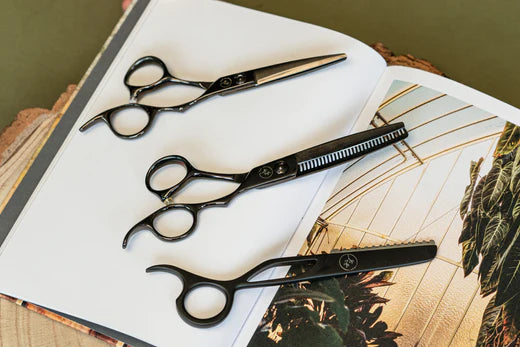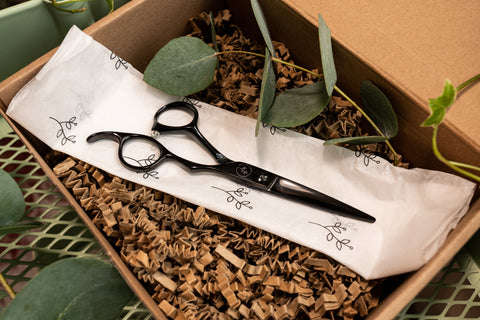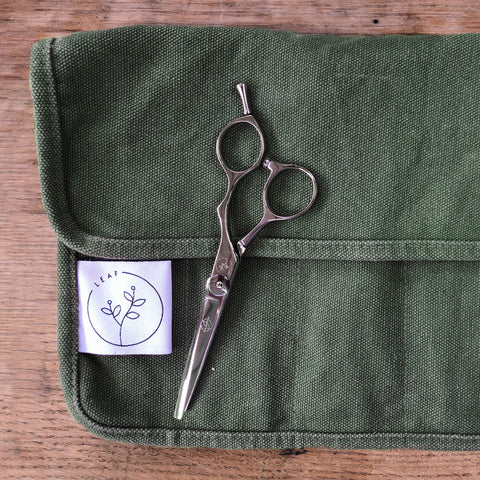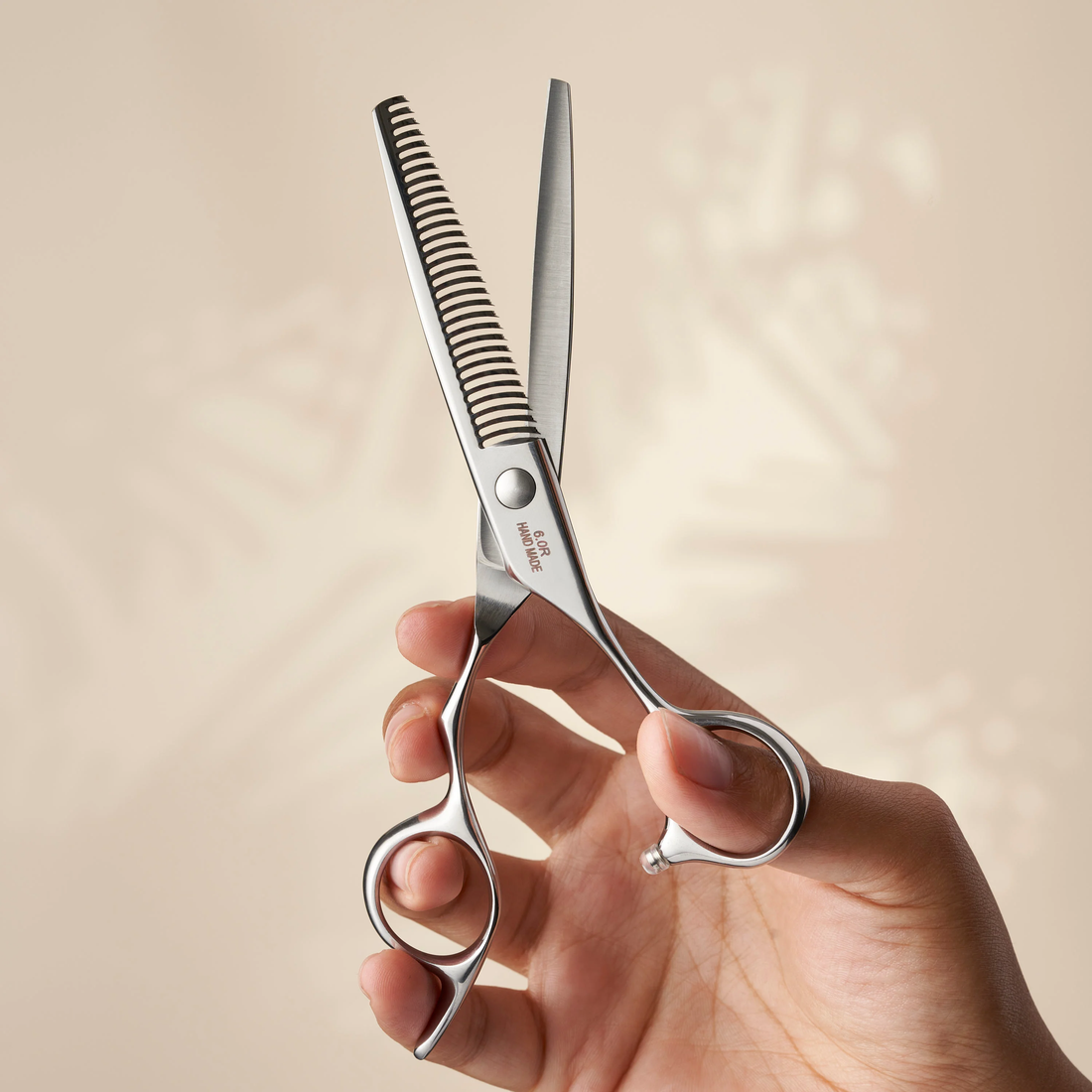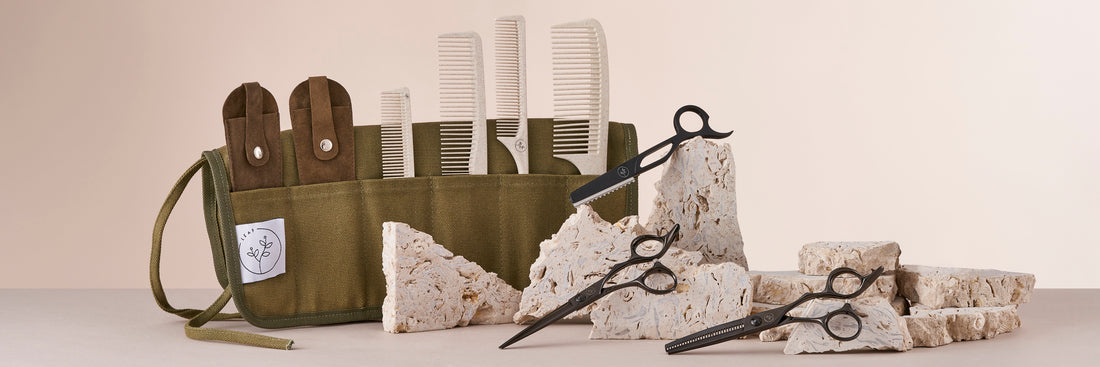Your scissors should always be comfortable in your hand; this will help you avoid hand fatigue and the development of RSI or carpal tunnel syndrome. Many hair stylists have multiple pairs of scissors for various hair-cutting jobs. If you're new to hairdressing or barbering, don't spend too much money on your first pair of scissors because you'll want to replace them as your style and skill improve.
Far too many different types and brands of hair scissors are on the market today! Most people will stick with a familiar brand, but if you want to learn more about choosing scissors, this article is for you!
There has never been a more wide variety of hair scissor options! The difficulty is determining how to select a pair of hairdressing scissors that will satisfy both a beginner and a professional.
In this article, our main primary focus will be on the types of scissors and which one is right for you.
So let’s go!
The Size of the Scissors
Smaller scissors in the four and a half (4.5") to five and a half (5.5") inch range, for example, are ideal for trimming hair more precisely. Longer scissors, such as those measuring six (6.0") inches or longer, are better for implementing more complex hair-cutting strategies.
When selecting a hair-cutting scissor, remember that the blade size is not the only factor to consider. The type of blade, handle, and steel quality are all critical factors to consider. Hairdressers and barbers frequently purchase hairdressing scissor sets with varying sizes for hair-cutting.
The Different Types of Blades
There are two hair-cutting scissor blades: bevelled edge and convex. Which you choose is determined by your career stage, personal preferences, and financial resources.
Convex Blades
Convex blades, also known as "Japanese Style," are the sharpest type of blade with a razor-like edge. All convex-edged scissors have a hollow ground inside the blade for a very smooth cutting action. They can be used for all types of cutting, but their razor-sharp edge makes them especially useful for slicing. They are most appropriate for more experienced hairdressers.
Convex blades are solid stainless steel, a little heavier than bevelled-edge blades. Convex-bladed scissors are usually more expensive than bevelled-edged ones because the manufacturing process is similar to that used to make Samurai swords. A professional must also sharpen them, but with proper care and maintenance, a pair of convex-bladed scissors will last a lifetime.
The Bevelled Edge
Bevelled-edge blades are made of a metal alloy that makes them lightweight. Most European scissors have this design, which frequently includes micro serrations on one or both blades. Micro-serrated blades are ideal for learning to cut hair because they prevent hair from sliding down the blade. They can also be used for slow detail cutting or dry hair, but not for slice cutting because the hair will jam on the blade. Polished bevelled-edge blades are ideal for slicing and can be used for almost any other cutting technique.
The Scissors Handle
The handle of a hair-cutting scissor is a critical consideration when purchasing one. You want scissors that are comfortable in your hand and easy to control. Handles are classified into offset handles, opposing straight handles, and ergonomic crane handles.
The offset handle is more ergonomic and aids in cutting fatigue. Offset handles can also assist you in achieving greater cutting precision. If you want a comfortable and natural-fitting grip, you should buy offset handle hairdressing shears.
The most widely used handle by hairdressers is the opposing straight handle. This handle provides reasonable control and is simple to use.
Morever another common type of handle is the opposing straight handle. This handle is easy to control when cutting and provides a good balance.
The ergonomic crane handle reduces wrist fatigue while maintaining reasonable control. Barbers frequently use this type of handle.
The ergonomic crane handle is widespread because it reduces wrist fatigue while providing reasonable control. This handle is frequently used by barbers who have to cut hair all day. It's also ideal for hairdressers and aspiring hairdressers with small hands.
When Should I Sharpen My Scissors (Sharpening)?
Maintaining your scissors will keep your professional haircuts as sharp and precise as they were before.
This is a challenging question to answer. However, observing how frequently professionals use their hairdressing scissors and the type of blade they have (convex or edge) will help you determine how often your scissors need to be sharpened.

Sharpening hairdressing scissors at least once a year is required. However, ensuring that any professional sharpening service you use does not damage your tools is critical. To extend the life of scissors, hairdressers and barbers should oil them and clean them with a cloth and oil.
Wrapping It Up!
If you have the proper scissors, you will be able to give your best performance in hairdressing. This will allow you to choose the best size and shape of scissors for your hair-cutting technique.
What’s better to buy your scissors from than ‘Leaf Scissors’? Get them now!
They are typically 4.5" to 7", but barbers and hairdressers increasingly use the 6" and 5.5" sizes. The scissors range in length from 4.5" to 5.5". When cutting hair, they are more precise and can create specific shapes. These 6" to 7" long hair scissors are suitable for basic trimming techniques.
Measure the blade against your middle finger to find the right size hairdressing scissors. The length should then be measured against your palm to see if it fits. The Scissors range in length from 4.5 to 8 inches and are ideal for various hairdressing techniques.
At Leaf Scissors, we take pride in being part of the success of professional hairdressers. We not only provide scissors designed by and for professionals but also commit to offering valuable resources and knowledge to boost your business. We hope this content has inspired you and helped you achieve your professional goals. We will continue to share valuable information to reinforce your presence in the beauty sector.


